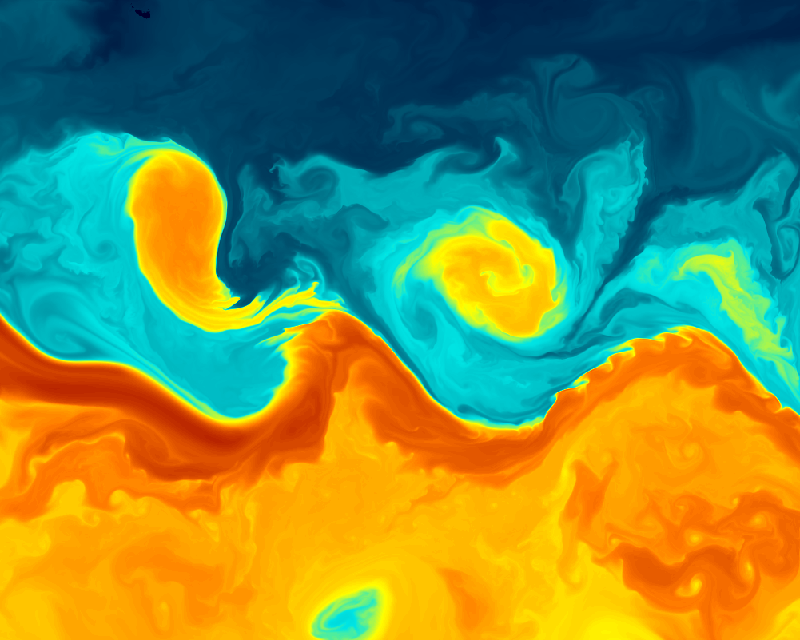Submesoscale Processes
North Wall submesocale instabilities
Realistic very high resolution simulations (δx = 150m) of the Gulf Stream North Wall are performed during wintertime using the ROMS model. Submesoscale structures associated with the strong lateral density gradients of the North Wall are seen in the form of deep filaments detraining warm salty water from the Gulf Stream ("streamers"), and cold water intrusions due to submesoscale instabilities in the mixed-layer ("comma instabilities"). Both processes were successfully sampled during the 2012 LatMix field campaign so we can compare modeling results with in-situ observations and use the modeling results to explain their formation, dynamics and role in driving exchanges across the front. Using virtual Lagrangian floats in our model solutions we investigate their quantitative effects in lateral and vertical mixing. By tracing these floats backwards in time, we identify the source of the different water masses in the region. We finally explain how all these processes will act on mixing cold fresh water from the north with the hot salty Gulf Stream water to form the "18° Water".

Snaphot of SST in a dx=500m ROMS nest over the Gulf Stream. Animation [.mov ]
Bibliography

| [1] | J.M. Klymak, R.K. Shearman, J. Gula, C.M. Lee, E.A. D’Asaro, L. Thomas, R. Harcourt, A. Shcherbina, M.A. Sundermeyer, M.J. Molemaker and J.C. McWilliams
Submesoscale streamers exchange water on the North Wall of the Gulf Stream
Submitted
|
| [2] | J. Gula, J. Molemaker, J.C. McWilliams and J.M. Klymak
Submesoscale instabilities on the Gulf Stream North Wall
In Preparation
|

| [3] | J.C. McWilliams, J. Gula and J. Molemaker
Secondary circulation and frontal tendency in a meandering jet
In Preparation
|
